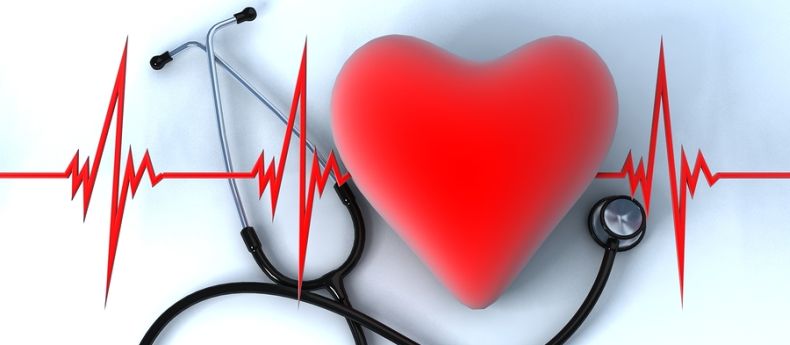
Be Smart, Listen to Your Heart
The American Heart Association has deemed February as American Heart Month to raise awareness about cardiovascular disease (CVD). According to World Health Organization (WHO) data, CVD and stroke continue to be among the top causes of death worldwide. Hypertension, also known as high blood pressure, is the most common risk factor and a leading contributor to CVD, making it the world’s number one public health threat.
What is the current epidemic status of hypertension and CVD?
In the U.S., high blood pressure (a.k.a. hypertension) affects approximately 75 million adults. One in every three Americans has hypertension, with the number rising to one in two for those 60 and older. Although effective treatment options are available, 65% of Americans with hypertension go untreated, or are undertreated. In addition, nearly one-third of adults with high blood pressure are unaware they are at risk for complications and diseases associated with hypertension, such as heart attack, heart failure, arrhythmia, stroke, or kidney disease. In China, the situation is equally grim. According to a 2005 study by Tulane University, cardiovascular disease has become the leading cause of death among Chinese adults. The American Heart Association projects that the prevalence of hypertension in China will increase to 25% by 2025.
Hypertension and CVD are global health problems. A 2010 World Heart Federation (WHF) report entitled “State of Heart” declared that 17.1 million lives around the world are claimed by CVD every year, with 82% of these cases occurring in the developing world. The increasing number of deaths, especially in developing countries, is alarming and saddening. If appropriate action is not taken, by 2015 the World Health Organization (WHO) estimates that 20 million people will die from CVD each year.
What are the risk factors?
While CVD sounds daunting, it is both preventable and manageable if you know the risk factors and take steps to deal with them. There are many risk factors that can lead to CVD. The most common are poor diet, lack of physical activity, smoking, diabetes, high cholesterol, high blood pressure, age, gender, family history, obesity, and stress. All of these factors play an important role in the health of your heart.
Among these factors, the most common and independent risk factor for CVD is high blood pressure. Untreated hypertension increases strain on the heart and arteries, eventually causing organ damage. Hypertension doubles or triples the risk of CVD. Hypertension also increases your lifetime risk of stroke to over 50%. After age 50, hypertension decreases life expectancy by an average of five years. In short, manage those risk factors.
What is normal blood pressure?
The Joint National Commission on High Blood Pressure (JNC 7) defines normal blood pressure as less than 120 over 80 (120/80) millimeters of mercury (mmHg). Used as a standard measurement of blood pressure, it usually refers to the pressure exerted upon the walls of blood vessels by circulating blood during each heartbeat, varying between a maximum (systolic) and a minimum (diastolic) pressure that decreases as the circulating blood moves away from the heart through arteries. Blood pressure drops most rapidly along the small arteries and arterioles, and continues to decrease as the blood moves through the capillaries and back to the heart through veins. This maximum and minimum pressure is measured at a person’s upper arm inside the elbow at the brachial artery, which is a major blood vessel that carries blood away from the heart, and is expressed first in terms of the systolic pressure over diastolic pressure.
A few years ago the commission also established a new category of blood pressure ranges called “pre-hypertension” that can be thought of as being on the verge of hypertension, but not quite fully there. Pre-hypertension is defined as systolic blood pressure between 120 and 139 mmHg or diastolic blood pressure between 80 and 89 mm Hg. Although people with pre-hypertension are not at any increased risk for stroke their risk for heart attack is tripled.
What preventive measures can be taken?
There are many things you can do to prevent hypertension and CVD. Most of the risk factors are well within your ability to control. Having a healthy heart isn’t difficult, but it does require you to make some basic lifestyle changes. Two of the most important changes–which happen to be the two that we have the most control over–are a balanced diet and regular exercise.
A balanced diet is one of the most effective methods for controlling hypertension, and is also the starting point of a healthy lifestyle. Eat more fresh fruits, fresh vegetables, fish, bread, whole grains, legumes, and unsalted nuts. Conversely, try not to eat foods that are high in saturated fat, sugar, and salt (sodium) – such as junk food and processed food.
Regular aerobic exercise, ideally three to five times a week, is also important when it comes to maintaining a healthy heart.In addition to substantially reducing the risk of heart disease and high blood pressure, regular physical activity also helps to relieve stress, increase energy, control weight, and decreases the risk of stroke, colon cancer, and diabetes. Try a recreational activity such as dancing, swimming, bicycling, or hiking, all of which promote cardiovascular fitness.
In addition to eating a balanced, healthy diet and being physically active, it is also important to maintain a healthy weight, stop smoking, and for those who drink to drink moderate amounts of alcohol, with no more than an average of one drink per day for women and two for men. Scheduling a regular checkup with your doctor to monitor your blood pressure and cholesterol levels is also important.
What treatments are available?
The goal of treatment is to reduce cardiovascular damage resulting from hypertension. Clinical studies found that effective therapy for hypertension can reduce the incidence of stroke by 35%-40%, the incident of heart attacks by 20%-25%, and the incident of heart failure by 50%.
Drug therapy is not recommended for treating pre-hypertension. Instead, lifestyle changes (mentioned above) are seen as an important first step in the treatment of high blood pressure. However, many patients with hypertension may also require medication to lower blood pressure. For example, most diabetics with hypertension may require therapy that uses three or more drugs.
In addition to lifestyle changes and drug therapy, there has been recent widespread discussion about treating hypertension with natural remedies or stress relief techniques. However, based on current clinical data, red tea, calcium, magnesium, potassium, coenzyme Q10, and relaxation therapies have proven ineffective for lowering blood pressure.






